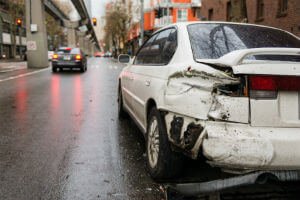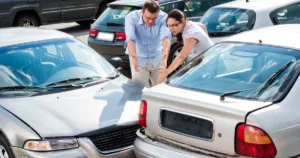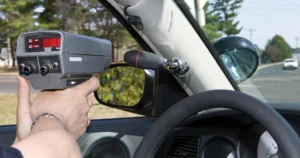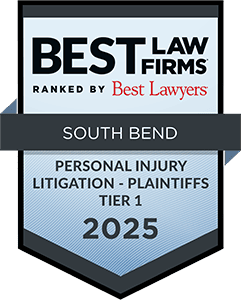 Victims of hit and run accidents have every right to be angry. They have been injured through no fault of their own, and the driver who caused the crash is attempting to avoid responsibility for his or her actions by driving away.
Victims of hit and run accidents have every right to be angry. They have been injured through no fault of their own, and the driver who caused the crash is attempting to avoid responsibility for his or her actions by driving away.
However, allowing your anger to get the better of you in the moments after the crash could prevent you from collecting vital information to help police catch the fleeing driver. Catching the other driver may be your only hope of obtaining compensation for medical expenses and other damages from the crash.
The South Bend car accident attorneys at Pfeifer, Morgan & Stesiak advise you to take the following steps after a hit and run accident in Indiana:
Never Chase the Other Driver
Allowing your anger to get the better of you could not only hurt your chances of recovering compensation, it could also cause you to chase the driver, possibly putting yourself in harm’s way.
While the driver may be fleeing the scene because he or she does not have car insurance, he or she could also be fleeing because of criminal activity. For instance, there could be an outstanding warrant for the driver’s arrest. He or she may be driving a stolen car, transporting drugs or driving without a license.
The police are armed and trained to deal with people who have committed crimes or are engaged in illegal activity. These individuals could become violent, so it is best to let the police try to catch them.
The other reason not to chase the driver is that it might not be safe for your car to be on the road. The accident may have damaged your car in such a way that it will be tougher for you to control. This puts you and everyone else on the road in danger.
Try to Read the License Plate Number
You need to react quickly when the other car begins fleeing the scene. Depending on how fast it is going, you may only have a few seconds to read the license plate number before it is out of view.
Regardless of whether or not you can read the license plate, try to identify the make, model and color of the vehicle. The police may be able to identify the car with this information and your description of the damage the vehicle sustained in the crash.
If you can get your smartphone out quickly, try to take pictures or video of the car as it is fleeing. You may be able to zoom in so you can clearly read the license plate number.
See What the Driver Looks Like
This is even harder to do than reading the license plate number, particularly if the driver is in a car with tinted windows.
This is why you should take note of any identifying features. Try to answer these questions:
- Is it a man or woman?
- Is the driver young or old?
- Does the driver have short or long hair?
- What was the driver wearing?
- What is the driver’s race?
The more information you can provide about the driver, the more likely the police are to find him or her. The police can only file criminal charges against the person who was driving the car. However, sometimes the driver and the person the car is registered to are not the same person.
Look for Witnesses to the Crash
You might not have gotten a good look at the car or the driver, but other people in the area may have. After you take notes on what you saw, look around for any witnesses and ask them what they saw.
You can even knock on the doors of any businesses to see if employers or customers saw anything that could help you identify the car and the driver.
Write down what the witnesses say and ask for their names and contact information for future reference.
You should also ask business owners if they have cameras in their stores, as they may have recorded the crash. Video footage could fill in the gaps from your description of the car and the driver.
Contact the Police
Explain what happened and wait for the police to arrive. When they do, describe the accident and give them all of the information you have collected about the driver and the car.
The police will search for the car and file an accident report, which can be used as evidence in a personal injury claim.
If the police find the car and the driver, the driver will be charged with leaving the scene of an accident, which is usually a Class B misdemeanor.
However, the crime is categorized differently based on the circumstances of the crash. For instance, leaving the scene of a crash that results in bodily injury is a Class A misdemeanor.
Leaving the scene is a Level 6 felony if the accident caused serious bodily injury or the crash occurred within five years of the driver being convicted of any of the offenses listed in Indiana Code 9-30-10-4. Some of these offenses include:
- Reckless homicide from the operation of a motor vehicle
- Voluntary or involuntary manslaughter from the operation of a motor vehicle
- Failure to stop at the scene of an accident that caused injury or death
- Driving a vehicle while intoxicated resulting in another person’s death
Leaving the scene is a Level 5 felony if the accident caused someone’s death.
Seek Medical Treatment
You cannot recover compensation unless your injuries have been diagnosed by a competent, qualified medical professional.
The doctors who treat you will note all of your injuries that were caused by the crash along with required treatments in your medical records. You will need copies of your records if you intend to file an insurance claim or personal injury claim to recover compensation.
You also need to follow the doctor’s recommendations closely. If you do not do what the doctor orders, the adjuster may think you are not seriously injured and are just trying to get money. This could make it harder to obtain fair compensation from the insurance company.
Start a Car Insurance Claim
When assigning financial responsibility for a car accident, Indiana employs a tort liability system, also known as a fault-based system. This means that the driver who caused the accident is required to compensate the other driver for property damage and medical expenses.
However, hit and run accidents complicate the situation. If the police can find the driver, and he or she has insurance, you should be able to file a claim and obtain compensation.
However, people often flee the scene of an accident because they do not have insurance. In these cases, even if the police catch the driver, you will not be able to obtain insurance compensation from this person.
This is why the state of Indiana requires all drivers to have uninsured motorist coverage in their car insurance. Uninsured motorist coverage provides compensation for hit and run accidents and accidents involving drivers who do not have insurance.
The only other way to obtain insurance compensation if the police do not catch the driver or he or she does not have insurance is through collision or medical payments coverage. These provide compensation for property damage and medical expenses from the accident.
If you are unable to obtain insurance compensation, you can contact one of our personal injury attorneys in South Bend about filing a personal injury lawsuit against the driver, assuming you found this person.
The car crash attorneys at Pfeifer, Morgan & Stesiak can advise you of all of your options after a hit and run accident. Our number one priority is to do what is in your best interests so you obtain the compensation you deserve.
Contact our firm right now if you have been the victim of a hit and run accident.













